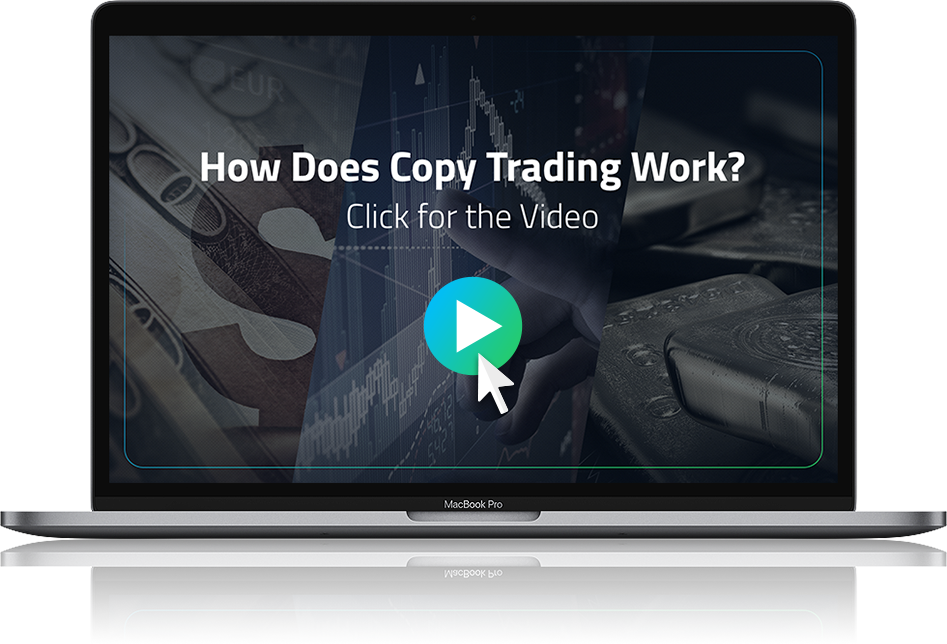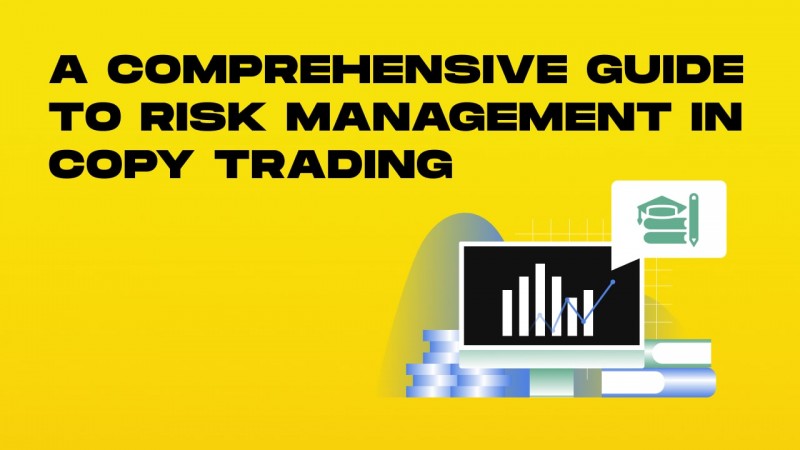Copy trading is a strategy that allows individuals to automatically copy positions opened and managed by another selected trader. This approach has become popular among both new and experienced traders as it enables individuals to replicate the trading strategies of successful traders directly in their brokerage accounts. Here’s a detailed explanation of how FP Markets Copy Trading works, along with its benefits and risks.
What is Copy Trading?
Copy trading links a portion of your portfolio to the portfolio of another trader whose investments and trades are then mirrored in your account. When the trader you are copying opens a position, the same position is automatically opened in your account with respect to the amount of money you have allocated for copy trading. The process is handled by the trading platform, which tracks the movements of the traders you have chosen to copy and executes the same trades on your behalf.
How Copy Trading Works
- Trader Selection: You select a trader to copy, usually based on a track record of profitability, trading style, and risk tolerance that aligns with your own trading goals.
- Allocation of Funds: You decide how much money to allocate to copying a trader. This can be a percentage of your portfolio or a fixed amount.
- Automatic Replication: Once you have set up copy trading, any action made by the trader (like opening or closing positions, or setting stop losses and take profits) is automatically replicated in your account in real-time.
- Performance Monitoring: You can monitor the performance of your investments and make adjustments to your selections as necessary.
Benefits of Copy Trading
- Simplicity: Copy trading does not require you to build and monitor positions actively; it’s automated and straightforward.
- Learning Opportunity: It offers a valuable learning opportunity to less experienced traders who want to understand market signals and trading strategies by observing the actions of more experienced traders.
- Diversification: By copying multiple traders who employ different strategies, you can diversify your trading risks.
- Time Efficiency: Since the trading decisions are made for you, it requires less time than active trading, making it suitable for people who cannot commit full-time to trading.
Risks of Copy Trading
- Dependence on Expert Traders: The success of your investment relies heavily on the expertise and reliability of the trader being copied.
- Market Risk: Like all trading, copy trading involves significant risk, especially if the copied trader engages in risky strategies or if the market moves against the positions they choose.
- Loss of Control: By automating your trading decisions, you lose some control over your trading activities. It can lead to complacency where you might not monitor the performance as closely as you should.
- Mismatched Strategies: There’s a risk of choosing a trader whose risk level or trading strategy doesn’t match your own risk tolerance or financial goals.

FP Markets and the Dynamics of Copy Trading
FP Markets is a renowned broker in the financial trading industry, offering comprehensive solutions that include copy trading services. Their platform enables traders to effortlessly mimic the trades of experienced investors, leveraging their expertise to potentially enhance returns. This overview will cover the specific features of FP Markets’ copy trading services and how they integrate copy trading into their existing platform.
Features of Copy Trading at FP Markets
FP Markets provides a user-friendly copy trading service that incorporates several key features:
Wide Selection of Traders
- FP Markets offers access to a diverse range of signal providers. Traders can choose from a variety of experienced traders based on performance metrics like return on investment, risk level, and historical accuracy.
Transparency of Trader Performance
- Detailed performance data on each signal provider is available, including historical performance charts, risk scores, and the number of followers. This transparency helps users make informed decisions about whom to follow.
Customizable Copying Options
- Traders can set specific parameters for their copy trading activities, such as choosing a fixed amount of money or a percentage of their portfolio to allocate to copying each trader. Users can also decide to manually approve each trade before execution.
Real-Time Control and Adjustment
- Users have the ability to start or stop copying a trader, increase or decrease the amount of funds allocated, or pause copying temporarily, all in real-time from their trading dashboard.
Integrated Risk Management Tools
- FP Markets incorporates tools such as stop losses and take profits that can be applied to copy trading activities, allowing users to manage their exposure and safeguard their investments against market volatility.
Integration of Copy Trading into FP Markets Copy Trading
FP Markets integrates copy trading seamlessly into its existingFP Markets Copy Trading, such as MetaTrader 4 and MetaTrader 5, offering an intuitive user experience:
Seamless Platform Integration
- Copy trading functions are embedded within the existing MetaTrader platforms, ensuring that users can manage both their individual trading and copy trading from the same interface.
Unified Account Management
- Traders can use their existing FP Markets trading accounts to engage in copy trading without the need for a separate account, simplifying the management process and maintaining a unified balance for trading activities.
Accessibility Across Devices
- The copy trading service is accessible via desktop, web, and mobile versions of the platform, allowing traders to monitor and adjust their investments wherever they are.
Support and Resources
- FP Markets provides dedicated support for its copy trading service, including customer service for technical issues and a wealth of educational resources to help traders understand the best practices of copy trading.
How FP Markets Stands Out in Copy Trading
FP Markets stands out due to its robust integration of copy trading into well-established FP Markets Copy Trading, combined with comprehensive support and transparency. This approach ensures that both new and experienced traders can engage in copy trading with confidence, supported by detailed data and user control options that align with their trading strategies and risk tolerance.

Setting Up a Copy Trading Account with FP Markets
Copy trading at FP Markets allows traders to automatically replicate the trades of experienced and successful traders directly in their own accounts. Here’s a step-by-step guide on how to open and set up a copy trading account with FP Markets, including initial configuration and settings to consider.
1: Open an FP Markets Account
Register
- Action: Visit the FP Markets website and navigate to the registration page. Provide the required personal details, such as your name, email address, and phone number, to create an account.
Verify Your Account
- Action: To comply with regulatory requirements, you’ll need to verify your identity and residency. This typically involves uploading a government-issued ID (like a passport or driver’s license) and a recent utility bill or bank statement.
2: Fund Your Account
Deposit Funds
- Action: Once your account is verified, log in to your FP Markets client area and navigate to the deposit section. Choose your preferred deposit method from options such as bank transfer, credit/debit cards, or e-wallets, and follow the prompts to fund your account.
3: Access the FP Markets Copy Trading
Select the Platform
- Action: FP Markets integrates copy trading features into its MetaTrader 4 and MetaTrader 5 platforms. Decide which platform you wish to use and download it from the FP Markets website.
Log In to Your FP Markets Copy Trading
- Action: Open the FP Markets Copy Trading and log in using your FP Markets account details. Ensure that you have internet connectivity to access real-time data and trading features.
4: Configure Your Copy Trading Settings
Choose a Signal Provider
- Action: Explore the list of available signal providers. Each provider should have a detailed profile that includes their trading performance history, risk level, and the number of followers. Use this information to choose a provider whose strategies and risk tolerance match your trading goals.
Allocate Funds
- Action: Decide how much capital you want to allocate to copying the selected trader. This can either be a specific dollar amount or a percentage of your total account balance.
Set Risk Management Parameters
- Action: Configure risk management settings such as setting a stop-loss level, a maximum drawdown, or a take-profit point for the trades copied from your chosen provider.
5: Monitor and Adjust
Regular Review
- Action: Regularly review the performance of the trades that are being copied to your account. Assess whether they are meeting your expected outcomes and make adjustments as necessary.
Adjust or Change Providers
- Action: If a signal provider is not performing as expected, consider reducing the amount allocated to them or stopping to copy their trades altogether. Alternatively, you can start copying a different provider whose strategies might be more aligned with your trading objectives.
Initial Considerations
- Strategy Compatibility: Ensure that the trading strategy used by the signal provider complements your overall trading goals and risk appetite.
- Diversification: Consider following multiple signal providers to diversify your trading risk.
- Active Management: Stay actively involved in monitoring your copy trading activities. Although trades are executed automatically, your oversight is crucial to ensure that they align with your financial goals.

Selecting a Trader to Copy on FP Markets
When engaging in copy trading on FP Markets, choosing the right trader to copy is crucial. This decision should be based on thorough analysis and understanding of each trader’s performance metrics and risk assessments. Here are the key criteria to consider and how to interpret essential performance metrics to make an informed decision.
Criteria for Choosing a Trader to Copy
1. Trading Performance History
- Importance: A trader’s historical performance provides insight into their trading skill and consistency. Look for traders with a track record of profitable trading over a significant period, which often indicates experienced decision-making and strategy adaptation.
2. Risk Management
- Importance: Effective risk management is essential in trading. Evaluate how traders manage their risks, particularly their use of stop-loss orders, their average drawdown, and how they recover from losses.
3. Trading Style and Strategy
- Importance: The trader’s style should align with your trading preferences. Whether they focus on long-term trends, short-term trades, specific markets, or diversification across various instruments, their approach should complement your investment goals.
4. Consistency and Reliability
- Importance: Consistency in trading results can be more telling than short periods of high returns. Stable returns often suggest a balanced strategy that doesn’t rely excessively on high-risk trades.
5. Number of Followers and Copied Capital
- Importance: A high number of followers and significant copied capital can indicate trust from other traders, but this should not be the sole criterion, as it can sometimes reflect temporary popularity rather than sustainable success.
Understanding Trader Performance Metrics
Return on Investment (ROI)
- Indicator: Measures the percentage return on the original investment. High ROI may indicate successful trading but assess it in relation to the risk taken to achieve those returns.
Drawdown
- Indicator: Represents the largest drop from peak to trough in a trader’s portfolio, usually quoted as a percentage. Lower drawdowns are preferable as they indicate less risk exposure.
Risk Score
- Indicator: Many platforms rate traders based on the level of risk they take. This score can help you determine if a trader fits your risk tolerance. Higher scores typically indicate higher risk.
Win Rate
- Indicator: The percentage of trades that are profitable. While a high win rate is attractive, it should be evaluated in conjunction with the profit/loss ratio to understand its impact on overall returns.
Profit/Loss Ratio
- Indicator: Compares the average profit of winning trades to the average loss of losing trades. Ideally, profitable trades should outweigh the losses significantly, not just in frequency but also in monetary value.
How to Use This Information
- Compare and Contrast: Analyze multiple traders based on these metrics. Don’t focus solely on one aspect like ROI or win rate but consider a combination of factors to assess overall suitability.
- Align with Goals: Ensure the trader’s style and risk level align with your own trading goals and risk tolerance. This alignment is crucial for maintaining comfort with the trading decisions that will be replicated in your account.
- Start Small: Initially, allocate a smaller amount of capital until you are comfortable with the trader’s style and consistency. Increase the allocation gradually as confidence in the trader grows.
- Monitor Regularly: Continuously monitor the trader’s performance and make adjustments as needed. Market conditions change, and so may the effectiveness of a trader’s strategy.
Strategies for Effective Copy Trading
Copy trading offers a unique opportunity for traders to benefit from the expertise of others, potentially enhancing their own trading results. However, to maximize the effectiveness of copy trading, it’s important to implement certain strategies and best practices. Here, we discuss key strategies for successful copy trading, focusing on best practices and the importance of diversification by copying multiple traders.
Best Practices for Copy Trading
1. Select the Right Traders
- Key Strategy: Carefully evaluate potential traders to copy based on their trading performance, risk management, and consistency. Look for traders whose strategies and risk levels align with your trading goals.
2. Understand the Strategies
- Key Strategy: Gain a thorough understanding of the trading strategies employed by the traders you copy. This includes knowing the markets they trade, the tools they use, and how they react to different market conditions.
3. Start with a Demo Account
- Key Strategy: Use a demo account to test copy trading without financial risk. This allows you to see how the process works and how it fits with your overall trading strategy before committing real money.
4. Use Risk Management Tools
- Key Strategy: Implement risk management tools such as setting stop-loss orders and defining maximum drawdown limits to protect your investments.
5. Monitor and Adjust Regularly
- Key Strategy: Continuously monitor the performance of the traders you are copying. Be prepared to make adjustments to your copy trading choices as market conditions change or as traders’ performance fluctuates.
Diversifying by Copying Multiple Traders
Why Diversify?
- Diversification helps spread risk across various trading styles, strategies, and markets. By copying multiple traders, you reduce the impact of any single trader’s poor performance on your overall portfolio.
How to Diversify Effectively
- Choose Different Markets: Copy traders who specialize in different markets such as Forex, commodities, indices, or cryptocurrencies to spread market-specific risks.
- Vary Strategies: Include traders who employ differing trading strategies—some may focus on long-term trends while others might specialize in short-term or scalping strategies.
- Balance Risk Levels: Mix high-risk and low-risk traders. Consider the overall risk exposure and how it aligns with your risk tolerance.
- Geographical Diversification: Consider traders from different geographical regions who might have better insights into local markets or differing approaches due to time zone advantages.

Implementing the Strategy
Set Clear Objectives
- Define what you aim to achieve with copy trading. Set specific goals regarding returns, risk levels, and investment duration.
Allocate Capital Wisely
- Decide how much capital to allocate to each trader. It’s wise not to overexpose your portfolio to any single trader. A common approach is to allocate more capital to traders who have demonstrated consistent returns with lower volatility.
Regular Evaluation
- Schedule regular intervals to evaluate the performance of each trader you are copying. This can be monthly, quarterly, or semi-annually. Use this evaluation to rebalance your portfolio, either by reallocating capital or replacing underperforming traders.
Stay Informed
- Keep abreast of market news and trends. Sometimes, external factors such as economic changes or geopolitical events can significantly impact trading strategies.

Tools and Resources for Copy Traders at FP Markets
FP Markets offers a variety of tools and resources designed to enhance the copy trading experience. These tools are aimed at helping traders analyze performance, manage risk, and make informed decisions about which traders to copy. Here’s an overview of the essential tools and resources provided by FP Markets for copy traders, along with guidance on how to utilize them effectively.
Essential Tools and Resources for Copy Traders
1. Trader Analytics Dashboard
- Description: FP Markets provides a comprehensive dashboard that displays detailed analytics on each trader available for copying. This includes historical performance charts, risk assessments, return statistics, and more.
- Usage: Use the dashboard to assess the performance and risk profile of potential traders. Metrics like return on investment (ROI), drawdown, and winning percentage can help you gauge a trader’s consistency and risk management prowess.
2. Real-Time Performance Updates
- Description: The platform offers real-time updates on the performance of traders, allowing copy traders to monitor any significant changes or trends in the trading strategies they are copying.
- Usage: Regularly check these updates to ensure the traders you are copying continue to perform as expected. Quick access to performance updates can also help you make timely decisions to adjust your copy trading selections.
3. Customizable Copy Settings
- Description: FP Markets allows copy traders to customize their copy settings, including adjusting the proportion of funds allocated to each trader and setting stop-losses or take-profit levels to manage risks.
- Usage: Customize these settings to match your risk tolerance and investment goals. For example, setting a stop-loss for a trader with a higher risk profile can help mitigate potential losses.
4. Risk Management Tools
- Description: The platform includes integrated risk management tools that are crucial for managing the potential risks associated with copy trading.
- Usage: Apply these tools, such as stop-loss and risk level indicators, to control how much of your portfolio is at risk with each copied trade. This helps maintain a balanced risk across your investment portfolio.
5. Educational Resources and Webinars
- Description: FP Markets offers a wealth of educational content, including tutorials, guides, and webinars, which are particularly beneficial for new traders.
- Usage: Leverage these resources to better understand the dynamics of copy trading, learn about new strategies, and stay informed about best practices in risk management and trader selection.
6. Community Forums and Support
- Description: Access to community forums and dedicated support services allows traders to discuss strategies, share experiences, and resolve any issues that might arise.
- Usage: Engage with the community to gain insights from other copy traders and learn from their experiences. Use the support services to address technical issues or queries regarding your copy trading account.
How to Analyze and Choose Traders Using These Tools
- Analyze Historical Performance: Start by reviewing the historical performance of traders using the analytics dashboard. Look for traders with a consistent track record of profits and acceptable levels of risk.
- Assess Risk Management: Evaluate how each trader manages risk. Consider traders who use stop-losses effectively and those whose maximum drawdown levels are within your comfort zone.
- Diversify Your Choices: Use the information available to diversify your selection of traders. Choose traders with different strategies and performance metrics to spread risk.
- Monitor and Adjust: Continuously monitor the performance of the traders you are copying using real-time updates. Be prepared to make adjustments to your settings or change the traders you copy based on their latest performances and any new strategies you learn from educational resources.

Risk Management in Copy Trading
Effective risk management is crucial in copy trading to safeguard investments and maximize potential returns. Here are some specific risk management techniques for copy trading, including how to set limits and make necessary adjustments to your trading strategies.
Important Risk Management Techniques for Copy Trading
1. Choose Traders Wisely
- Key Technique: Evaluate traders not just on their returns but also on their risk levels and the volatility of their trading results. Opt for traders whose risk management strategies align with your own risk tolerance.
2. Diversification
- Key Technique: Don’t rely on a single trader. Spread your risk by copying multiple traders who employ different strategies and trade different instruments. This helps mitigate the risk if one trader’s strategy performs poorly.
3. Use Stop-Loss Orders
- Key Technique: Implement stop-loss orders for each trade or for the overall strategy when possible. This limits potential losses by automatically closing out trades when they reach a certain loss level.
4. Monitor Drawdown
- Key Technique: Keep an eye on how much capital you’re losing from your peak balance (drawdown). Set maximum drawdown limits to determine when to stop copying a trader if their actions result in significant losses.
5. Regularly Review and Adjust
- Key Technique: Continuously monitor the performance of the traders you are copying. Review their trading strategies and performance at regular intervals to ensure they continue to meet your investment goals.
Setting Limits in Copy Trading
Copy Amounts
- Action: Decide how much of your total capital you want to allocate to copy trading and how much to allocate to each trader. A common rule is not to risk more than 2% of your total capital on a single trader.
Maximum Drawdown
- Action: Establish a maximum drawdown level at which you will stop copying a trader. For example, if a trader loses more than 20% of the funds allocated to them, you might choose to stop copying them to prevent further losses.
Using Stop-Loss Orders
- Action: Apply stop-loss orders on trades initiated through copy trading. Determine these levels based on historical volatility and the specific trader’s average loss per trade.
How to Adjust or Stop Copying a Trader
Regular Performance Evaluation
- Action: Regularly assess the performance of the traders you are copying. Look for any significant changes in their trading strategy or performance metrics that could impact your investments.
Making Adjustments
- Action: If a trader’s strategy no longer aligns with your risk tolerance or if their performance deteriorates, reduce the amount of capital allocated to them or adjust the stop-loss and take-profit settings accordingly.
Stopping Copying
- Action: If a trader consistently underperforms or exceeds your risk thresholds, you may decide to stop copying them entirely. This can be done through the trading platform where you manage your copy settings.

Economic Considerations: Costs, Fees, and Profits in Copy Trading at FP Markets
Copy trading at FP Markets, like any trading activity, involves various costs and fees that can impact overall profitability. Understanding these charges is crucial for managing your investments effectively. Here’s a detailed breakdown of the financial aspects associated with copy trading at FP Markets and a comparison with traditional and other forms of automated trading.
Costs and Fees in Copy Trading at FP Markets
1. Spread and Commission Costs
- Description: Just like in traditional trading, every trade executed through copy trading incurs spread costs and possibly commissions, depending on the account type you have with FP Markets.
- Details: Spreads vary by asset and market conditions, while commissions may be fixed per lot traded or percentage-based, depending on the specifics of the trading account.
2. Performance Fees
- Description: Some copy trading arrangements involve performance-based fees, where you pay a portion of your profits to the trader you are copying if they achieve a net profit on their trades in your account.
- Details: These fees are usually a percentage of the profits generated by the trader and are only applicable if the trading results in a profit for the period assessed.
3. Subscription Fees
- Description: Depending on the structure of the copy trading service, there might be a subscription fee to access the platform or specific traders.
- Details: FP Markets generally integrates copy trading features without additional subscription fees, focusing instead on trading execution costs that are standard across the platform.
Profit-Sharing Model
- Description: In a typical profit-sharing model, the trader receives a predefined percentage of the profits earned on the money you’ve allocated to copy their trades.
- Example: If the agreed profit share is 20%, and the trader makes a $100 profit on the portion of your portfolio copying them, you would pay them $20.
Comparison with Traditional and Other Forms of Automated Trading
Traditional Trading Costs
- Details: Traditional trading typically involves spreads, commissions, and possible account management fees, without any profit-sharing arrangements.
- Comparison: In traditional trading, you retain all your profits but also bear all the risks and responsibilities of trading decisions.
Automated Trading Costs (e.g., Using Expert Advisors)
- Details: Automated trading using Expert Advisors (EAs) on platforms like MetaTrader also incurs spreads and commissions. However, there may be additional costs for purchasing EAs or custom development fees.
- Comparison: While EAs automate the trading process similar to copy trading, the costs are upfront and continual regardless of profitability, unlike profit-sharing in copy trading.
Copy Trading Costs
- Advantages: Copy trading uniquely involves profit-sharing, aligning the interests of the trader and the follower, as the trader earns more if they generate more profits for their followers.
- Considerations: While potentially more expensive if successful (due to profit-sharing fees), this model can offer greater peace of mind since you only pay extra when you are actually making a profit.

Community and Social Aspects of Copy Trading at FP Markets
FP Markets leverages the power of community engagement in its copy trading environment, offering traders not just a platform to replicate trades but also a social space to interact, learn, and grow. The community dynamics play a significant role in enhancing the copy trading experience by providing a network of support, education, and collaboration. Here’s how the community influences the copy trading environment at FP Markets and tips on engaging effectively with other traders.
Role of the Community in FP Markets’ Copy Trading Environment
1. Knowledge Sharing
- Description: The community provides a platform for sharing valuable trading insights and strategies. Experienced traders share their expertise, while newer traders can ask questions and receive guidance.
- Impact: This dynamic fosters a learning environment where all members can benefit from shared knowledge, leading to improved trading decisions and strategies.
2. Transparency and Trust
- Description: Through community interactions, traders can gain insights into the strategies and performance of potential traders to copy, beyond just statistical data.
- Impact: This transparency helps in building trust within the community, as traders can better understand the decision-making processes behind the trades they are copying.
3. Support Network
- Description: Trading can be isolating, but the community aspect of copy trading provides a network of support. Traders can discuss challenges and share solutions, helping to alleviate the psychological stresses associated with trading.
- Impact: The support network enhances trader confidence and can lead to more sustainable trading practices.
Engaging with Other Traders and Learning from the Community
Active Participation
- Strategy: Actively participate in forums, webinars, and discussion groups offered by FP Markets. Engage in conversations, ask questions, and share your own insights.
- Benefits: Active participation helps in building connections and learning from the experiences of others, which can directly impact your trading skills and decision-making.
Collaborative Learning
- Strategy: Collaborate with other traders to explore new strategies or refine existing ones. Many platforms allow for group discussions or partnership opportunities.
- Benefits: Collaboration can lead to innovative approaches and strategies, reducing the learning curve and potentially leading to more profitable trading outcomes.
Utilize Social Tools
- Strategy: Utilize the social tools provided by FP Markets, such as following top traders, commenting on their strategies, and replicating trades that align with your goals.
- Benefits: These tools make it easier to engage with the community and integrate what you learn directly into your trading activities.
Feedback and Improvement
- Strategy: Regularly provide and solicit feedback on trading strategies and outcomes. Use community insights to continually improve your approach to trading.
- Benefits: Feedback is crucial for continuous improvement and adapting to changing market conditions. It also helps in maintaining an active learning process within the community.

Copy Trading Success Stories and Case Studies on FP Markets
Copy trading on FP Markets has led to numerous success stories, where traders have significantly benefited from the strategies and insights of experienced investors. By analyzing specific examples of successful copy trading strategies and the insights provided by proficient traders, new and seasoned traders alike can gain valuable lessons. Here are a few case studies that illustrate the effectiveness of copy trading strategies implemented on FP Markets.
Case Study 1: The Conservative Forex Trader
Background:
- Trader Profile: Sarah, a part-time trader with a conservative approach, focusing primarily on major forex pairs.
- Strategy: Sarah’s strategy involves meticulous technical analysis with a strong emphasis on risk management, primarily trading EUR/USD and USD/JPY during peak liquidity hours to minimize spread costs.
Success Factors:
- Low Risk and Consistency: Sarah maintains a low-risk profile by setting tight stop-losses and modest profit targets, ensuring consistent small gains which accumulate over time.
- Communication: She regularly updates her followers on FP Markets about her trading rationale and upcoming strategies, fostering trust and transparency.
Insights:
- Tip for Followers: Sarah advises her followers to maintain a diversified portfolio and not to allocate more than 20% of their copy trading funds to a single trader, emphasizing risk distribution.
Case Study 2: The Aggressive Equity Trader
Background:
- Trader Profile: Mike, a full-time trader known for his aggressive trading strategies in equity markets.
- Strategy: He focuses on high-volatility stocks, using both fundamental analysis (for long-term positions) and technical signals (for short-term trades).
Success Factors:
- High Reward Strategy: Despite higher risks, Mike’s aggressive strategy often results in substantial profits due to his deep understanding of market dynamics and timely exits.
- Leverage Management: He uses leverage judiciously, enhancing potential returns while being cautious of the downside risks.
Insights:
- Tip for Followers: Mike emphasizes the importance of setting a personal risk tolerance level before following aggressive traders and recommends using stop-loss orders to mitigate potential losses.
Case Study 3: The Diversified Trader
Background:
- Trader Profile: Linda, a trader who diversifies across multiple asset classes including forex, commodities, and cryptocurrencies.
- Strategy: Her approach involves a mix of long-term and short-term trades based on a combination of technical indicators and market sentiment analysis.
Success Factors:
- Portfolio Diversification: By trading multiple asset classes, Linda reduces the impact of poor performance in any single market.
- Adaptability: She quickly adapts her strategies based on market conditions and economic indicators, often sharing these insights with her followers.
Insights:
- Tip for Followers: Linda advises her followers to regularly review the performance of all copied trades and not to hesitate in stopping the copy if the strategy no longer aligns with market conditions or personal investment goals.

